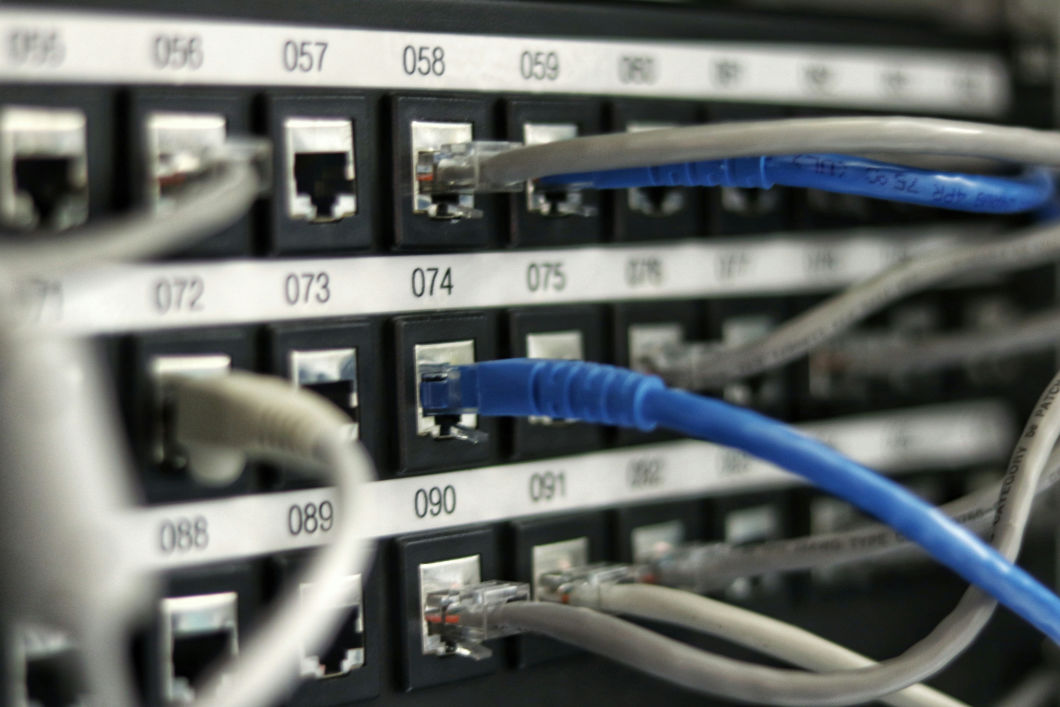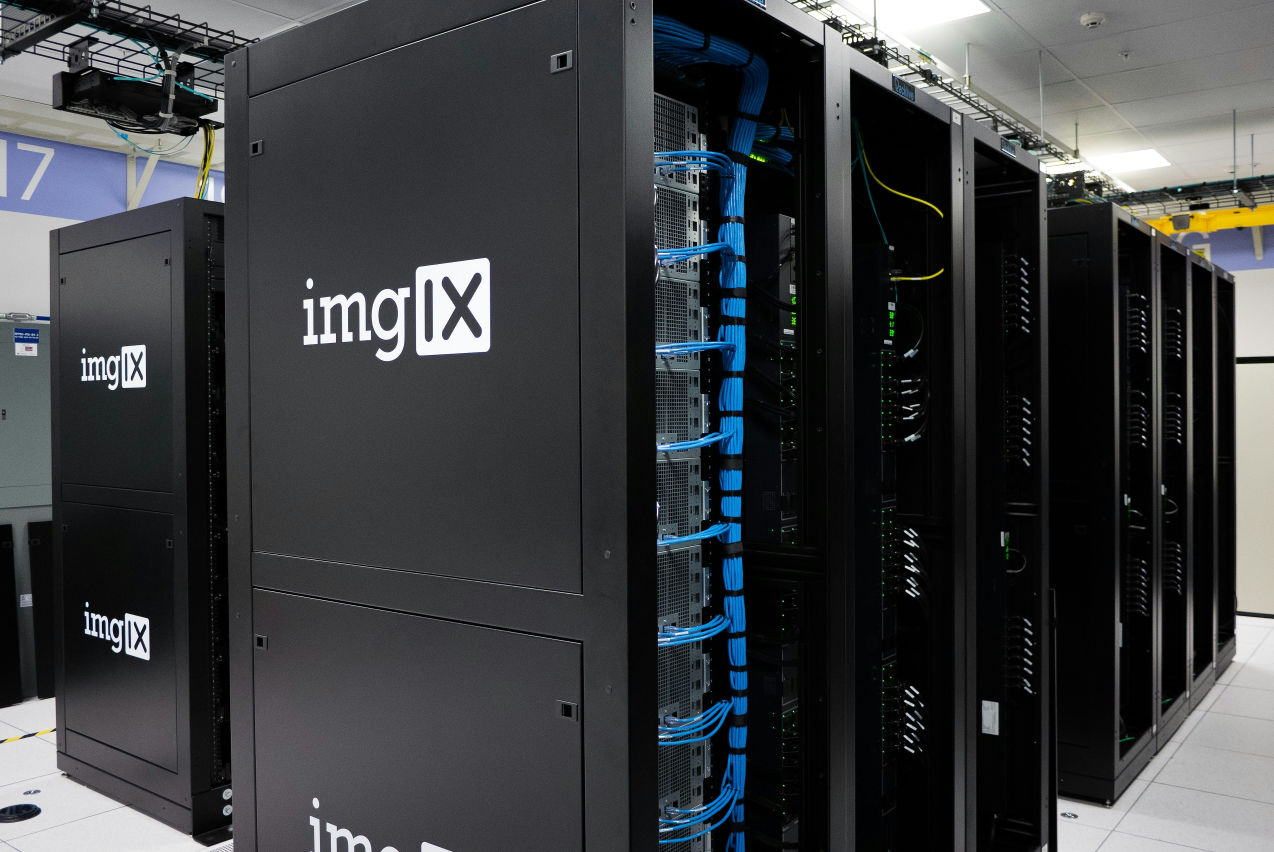Stateful Firewall vs. Stateless Firewalls: What's the Difference?

In the vast and ever-evolving landscape of network security, firewalls serve as the first line of defense against cyber threats. Understanding the nuances between stateful and stateless firewalls is crucial for IT professionals, network administrators, and businesses striving to safeguard their digital assets. This article delves into the core differences, pros and cons, and practical considerations to help you make an informed decision on which firewall best suits your network security needs.
Understanding the Basics of Firewalls
Firewalls are network security devices that monitor and control incoming and outgoing network traffic based on predetermined security rules. Essentially, they act as a barrier between a trusted internal network and untrusted external networks, such as the Internet. Firewalls can be hardware-based, software-based, or a combination of both, providing a critical layer of security that helps to prevent unauthorized access to or from private networks.
What is a Stateful Firewall?
A stateful firewall, often considered a Layer 7 firewall from the OSI model, offers advanced security by inspecting the state, context, and traffic attributes. It monitors the full state of active connections and makes decisions based on the context of the traffic, not just the individual packets. This capability allows stateful firewalls to inspect all the way up to Layer 7, providing deep packet inspection, including within SSL port 443—which is critical given that approximately 70% of internet traffic is SSL encrypted. By maintaining a state table, stateful firewalls remember the details of what traffic has passed through, allowing them to block or allow future traffic based on past interactions.
What is a Stateless Firewall?
Conversely, a stateless firewall operates at the Layer 3 level of the OSI model and primarily inspects packet headers. Stateless firewalls filter traffic based on the source and destination addresses, port numbers, and protocols without considering the state of the network connection. This means they do not retain the memory of previous packets, and each packet is treated individually. While this approach can be faster due to its simplicity, it lacks the depth of inspection and security that stateful firewalls provide, making it less effective at identifying and stopping sophisticated threats.
Differences Between Stateful and Stateless Firewalls
The primary difference between stateful and stateless firewalls lies in their approach to monitoring and filtering traffic. Stateful firewalls keep track of the state of active connections (e.g., whether a packet is part of an existing conversation), allowing for more granular control and security. Stateless firewalls, however, filter traffic without context, making them faster but less secure.

Pros and Cons of a Stateful Firewall vs. Stateless Firewall
Pros of Stateful Firewalls
Enhanced Security: Stateful firewalls offer better security by keeping track of the state of network connections (such as TCP streams or UDP communication) and inspecting the context of the packets. This allows them to detect and block sophisticated attacks that exploit specific connection states or sequences.
Dynamic Traffic Filtering: They can dynamically allow or deny traffic based on the state of the connection rather than relying on predefined static rules. This makes them more flexible and capable of adapting to changing network conditions.
Reduced False Positives/Negatives: By understanding the context of traffic, stateful firewalls are less likely to mistakenly block legitimate traffic (false positives) or allow malicious traffic (false negatives), improving the accuracy of filtering.
In-depth Traffic Analysis and Logging: Stateful firewalls provide detailed logs and analysis of traffic patterns as they monitor the state of each connection. This information can be invaluable for troubleshooting, auditing, and understanding network behavior over time.
Protection Against Certain Attacks: They are particularly effective at preventing certain types of attacks, such as TCP/IP spoofing, session hijacking, and SYN floods, by ensuring that all packets are part of a known and valid connection.
Cons of Stateful Firewalls
Performance Impact: Monitoring the state of all connections requires more processing power and memory, which can impact network performance, especially in high-traffic environments.
Complexity in Configuration and Management: The increased capabilities and security features of stateful firewalls make them more complex to configure and manage. This can require more expertise and potentially lead to configuration errors if handled improperly.
Resource Intensive: As they track every connection, stateful firewalls can be resource-intensive, requiring more advanced hardware and potentially leading to higher costs, especially in large-scale deployments.
Potential for Single Point of Failure: Given their critical role in network security, if a stateful firewall fails, it can become a single point of failure for the network, potentially disrupting all traffic.
Difficulty in Handling Encrypted Traffic: While stateful firewalls are effective at inspecting unencrypted traffic, they may have limitations in dealing with encrypted traffic (such as HTTPS), which requires additional mechanisms (like SSL/TLS inspection) to properly inspect, potentially raising privacy concerns.

Pros of Stateless Firewalls
Speed and Efficiency: Stateless firewalls are generally faster than stateful firewalls because they inspect packets based on pre-defined rules without needing to track the state of each network connection. This makes them efficient for networks where speed is critical.
Simplicity: They are simpler to configure and manage due to their basic rule sets. The simplicity comes from only examining packet headers against a set of rules for IP addresses, ports, and protocols.
Resource Usage: Lower resource usage compared to stateful firewalls, as they do not need to maintain a state table of all current connections. This can be particularly advantageous in environments where hardware resources are limited.
Scalability: Due to their simplicity and efficiency, stateless firewalls can be easier to scale in large networks where maintaining connection states for millions of packets per second would be resource-intensive.
Cons of Stateless Firewalls
Lack of Context: One of the biggest drawbacks of stateless firewalls is their inability to understand the context of the traffic. They do not keep track of the state of network connections, making them less effective at identifying and blocking sophisticated attacks that exploit specific connection states or sequences.
Vulnerability to Certain Attacks: Because stateless firewalls do not track the state of connections, they are more vulnerable to certain types of attacks, such as spoofing or session hijacking, where malicious packets mimic legitimate packets.
Higher False Positives/Negatives: The simplicity of rule sets can lead to a higher rate of false positives (legitimate traffic being blocked) and false negatives (malicious traffic being allowed), especially in complex network environments where traffic patterns are not straightforward.
Limited Logging and Monitoring Capabilities: Stateless firewalls provide limited capabilities for logging and monitoring network traffic, as they do not record the state of network connections. This can make it more difficult to analyze and understand network traffic patterns over time.
What are some examples of stateful and stateless firewalls?
Palo Alto Networks:
Palo Alto Networks offers next-generation firewalls that are inherently stateful. These firewalls go beyond traditional stateful inspection by incorporating application-level inspection, user identity, and content security. They can identify, control, and safely enable applications while also inspecting the content for threats and preventing data leakage.
Cisco Systems:
Cisco provides various firewall solutions, including the Adaptive Security Appliance (ASA) and Firepower Threat Defense (FTD). Cisco ASA operates as a stateful firewall, inspecting traffic and maintaining a state table of all active sessions. Cisco FTD combines the capabilities of ASA with advanced threat protection, making it a powerful stateful inspection firewall with next-generation capabilities.
Microsoft Azure:
Azure provides both stateful and stateless firewall options. Azure Firewall is a managed, cloud-based network security service that offers stateful inspection of both inbound and outbound traffic. Additionally, Azure Network Security Groups (NSGs) act as a basic stateless firewall, providing access control based on source and destination IP, port, and protocol.
Forcepoint:
Forcepoint specializes in security solutions that protect networks, users, and data. While their firewall solutions focus on advanced threat protection and data security, they incorporate both stateful inspection and stateless filtering mechanisms within their broader security framework to offer comprehensive protection.
SonicWall:
SonicWall offers a range of firewall solutions, including next-generation firewalls that provide stateful packet inspection, intrusion prevention, malware protection, and application control. Their firewalls are designed to be stateful, utilizing deep packet inspection to analyze traffic in a comprehensive manner, ensuring advanced threat protection.
While RedZone Technologies collaborates with all major vendors, our partnership with SonicWall is noteworthy. We consistently earn awards highlighting the depth of our collaboration and the excellence we bring to the cybersecurity landscape.

Choosing the Best Firewall for Your Network
Selecting the right firewall depends on several factors, including your network's size, the sensitivity of the data it handles, and the specific security requirements of your organization. For individual and small business needs, a stateful firewall may provide the necessary security without excessive complexity. However, enterprises handling large volumes of traffic or requiring high levels of security might benefit more from the advanced capabilities of a stateful firewall.
Should you Choose a Stateful Firewall or a Stateless Firewall?
Choosing between a stateful or stateless firewall depends on several factors, including the specific requirements of the individual or organization, the scale of operations, and the complexity of the network environment. Here’s a breakdown of considerations for different scenarios:
Individual Firewall Needs
For individuals or home networks, the primary concern is often straightforward: protecting personal devices from common threats while maintaining a simple and cost-effective setup. Stateful firewalls are generally preferred because they provide a higher level of security by monitoring outgoing and incoming traffic to ensure that only legitimate responses to requests made by internal users are allowed through. Modern routers often come with built-in stateful firewall features suitable for individual use.
Small Business Firewall Needs
Small businesses need to balance cost with security. They require a solution that protects sensitive data and customer information without requiring extensive IT resources. Stateful firewalls benefit small businesses due to their dynamic nature of monitoring and maintaining active connections. They can offer adequate protection against various threats without significant manual intervention. Additionally, small businesses might start to explore Unified Threat Management (UTM) appliances that integrate stateful firewalls with other security features like antivirus, anti-spam, and intrusion prevention systems for comprehensive protection.

Enterprise Firewall Needs
Enterprises operate on a different scale and complexity, dealing with a vast amount of data across many users and applications, often spread over multiple locations. They face sophisticated threats that require advanced security measures. Stateful firewalls, particularly next-generation firewalls (NGFWs), are essential for enterprises. NGFWs go beyond traditional firewall capabilities by offering application-level inspection, intrusion prevention, and integration with other advanced threat protection technologies. Enterprises may also deploy a combination of stateful and stateless filtering within different segments of their network architecture to optimize security and performance.
Other Scenarios for Choosing Stateless Firewalls
Stateless firewalls can still be relevant in specific scenarios where simplicity, speed, and scalability are more critical than the inspection depth. For example:
- High-performance environments: Processing speed is paramount, and the primary concern is filtering large volumes of traffic based on source and destination IP addresses, ports, and protocols without the overhead of tracking session states.
- Supplemental security layers: In addition to stateful inspection, stateless filtering can serve as an additional layer of security, enforcing basic policies at the network perimeter or on internal segments.
- Specific application scenarios: Certain applications might benefit from the simplicity and efficiency of stateless filtering, especially when used in conjunction with more comprehensive security measures elsewhere in the network.
Choosing a Firewall in Microsoft Azure
For a more detailed exploration of how stateful and stateless firewall services compare, particularly in cloud environments like Azure and with specific products like SonicWall, the following external link provides valuable insights: Understanding the Difference Between Azure Firewall Services and SonicWall NSv.
Performance Considerations in Firewall Selection
When choosing between a stateful and stateless firewall, it's essential to consider the performance impact on your network. Stateful firewalls, while offering superior security, can consume more resources and potentially slow down network traffic. On the other hand, stateless firewalls, with their less complex filtering mechanisms, can offer faster throughput but at the cost of depth in security.
Tradeoffs Between a Stateful Firewall vs. Stateless Firewall
When deciding between a stateful and stateless firewall for your network security, understanding the tradeoffs between the two is crucial. Each type of firewall has its strengths and weaknesses, affecting control, resource consumption, flexibility, accuracy, maintenance requirements, and cost. Let's delve into these aspects to provide a clearer picture of what each firewall type entails.
Stateless Firewalls Offer Less Control
Stateless firewalls operate by inspecting packet headers and making decisions based on predetermined rules that apply to source and destination addresses, port numbers, and protocols. This method offers less control over the traffic because it does not consider the state of the connection or the context of the packets. As a result, while stateless firewalls can efficiently filter large volumes of data, they may not be as effective in controlling more sophisticated threats that require analysis of the ongoing connection state or packet content beyond the header.
Stateful Firewalls Consume More Resources
The comprehensive inspection capabilities of stateful firewalls, which examine the full packet and maintain a state table of active connections, result in greater resource consumption. This includes CPU, memory, and network bandwidth to track each connection's state. The increased use of resources can lead to higher operational costs and may require more robust hardware or software solutions to handle the load, especially in networks with high traffic volumes.
Stateless Firewalls Can Apply More Flexible Rules
Due to their basic filtering mechanism, stateless firewalls can apply rules more flexibly. Without the need to maintain a state table, these firewalls can quickly adapt to rule changes and apply them on the fly. This flexibility makes stateless firewalls suitable for environments where rapid changes to firewall policies are common or where the simplicity of rule management is preferred.
Stateful Firewalls Are Less Likely to Trigger False Positive Alarms

With their ability to understand the context of traffic and monitor the state of connections, stateful firewalls are better equipped to distinguish between legitimate traffic and potential threats. This reduces the likelihood of false positives, where benign traffic is mistakenly flagged as malicious. The precision of stateful inspection helps ensure smoother network operations and reduces the administrative burden of investigating and addressing false alarms.
Stateless Firewalls Don’t Need to Maintain Information About Each Connection
One of the advantages of stateless firewalls is their simplicity in not needing to maintain a state table for tracking connections. This means they require less memory and processing power, making them more efficient in environments where basic packet filtering is sufficient. The lack of a state table also simplifies the firewall's configuration and management, as there is no need to account for connection states in the security rules.
Stateful Firewalls Have a Higher Price Tag
Given their complexity and the deeper level of inspection they provide, stateful firewalls typically come with a higher price tag compared to stateless firewalls. This includes not only the initial acquisition cost but also ongoing maintenance and operational expenses. Organizations must consider these costs against the benefits of enhanced security and control offered by stateful firewalls, especially when planning their IT budgets.
Conclusion
The choice between stateful and stateless firewalls depends on your specific network needs, including security requirements, performance considerations, and the nature of the traffic. While stateful firewalls offer deeper inspection and higher security, they require more resources and management. Stateless firewalls, on the other hand, provide faster performance with less complexity but offer limited security capabilities. Evaluating your network's unique needs will guide you to the right firewall choice, ensuring your digital assets are adequately protected.
For further exploration into firewall technologies or assistance in selecting the right firewall for your network, visit our services pages at Virtual Security Operations, RedZone Products, and Resources. To learn more about the difference between Azure Firewall Services and SonicWall NSv, refer to SonicWall's blog here.
Contact Us today to discuss how we can help secure your network with the optimal firewall solution.

FAQs
Is Windows Firewall stateful or stateless?
Windows Firewall is stateful, providing comprehensive traffic monitoring and filtering based on the state of network connections. The optimal choice to consider within the Microsoft ecosystem is likely Azure. Refer to the linked article for more details. Understanding the Difference Between Azure Firewall Services and SonicWall NSv.
What are stateful and stateless packet filtering methods?
Stateful packet filtering considers the state of a connection when making decisions, while stateless filtering applies rules to individual packets without regard to the connection state.
How do stateful and stateless firewalls handle encrypted traffic?
Stateful firewalls can inspect encrypted traffic through SSL/TLS interception, decrypting, inspecting, and re-encrypting traffic to ensure security. This process allows them to identify threats within encrypted packets but raises privacy concerns and requires significant computational resources.
What's the purpose of an exception list in Firewalls?
The purpose of an exception list in a firewall is to specify which traffic is allowed to bypass certain security rules. It enables administrators to fine-tune security policies by explicitly allowing or denying access to specific IP addresses or domain names or applications.
 Security Updates
Security UpdatesUnderstanding IT Compliance: Scope, Benefits, and Challenges
Discover what IT compliance is, its importance, benefits, risks of non-compliance, frameworks, and how to achieve robust IT compliance in your organization.
 Security Updates
Security UpdatesImplement Secure Browsing with Powerful SSL Decryption
Explore the essentials of SSL decryption, its importance, challenges, and best practices for enhancing security and compliance for business in a detailed guide
 Security Updates
Security UpdatesTransitioning from Proxy Firewalls to Endpoint Security
Explore the evolution from proxy firewalls to endpoint security, enhanced threat detection, data encryption, and comprehensive protection for modern networks.
 Security Updates
Security UpdatesExpert IT Risk Assessment: Protect Your Business Today!
Mitigate potential IT threats with our comprehensive risk assessment guide, ensuring your digital infrastructure. Ensure your business is secure an...
 Security Updates
Security UpdatesEssential Guide to Best Practices in Compliance Security
Explore essential strategies for compliance security in this comprehensive guide. Learn about safeguarding your business and meeting regulatory sta...
 Security Updates
Security UpdatesSecure Your Data with Expert Cloud Database Solutions
Learn efficient solutions and secure your cloud databases with encryption and compliance features, ensuring data safety and privacy across all plat...
 Security Updates
Security UpdatesA Guide to Cloud Network Technology: Benefits and Types
Unlock the potential of cloud network technology for seamless connectivity. Learn and scale solutions that drive business innovation and growth via...
 Security Updates
Security UpdatesAffordable Managed IT Services for Small Businesses
Explore top-managed IT services for small businesses to boost efficiency and security. Get expert insights and practical tips to optimize your IT o...
 Security Updates
Security UpdatesSecure Your Network with Gateway Security Solutions
Explore the essentials of gateway security: learn about its importance for network protection and best practices to safeguard your digital assets e...
 Security Updates
Security UpdatesDisaster Recovery Testing: Ensure Business Continuity
Explore effective disaster recovery testing strategies in this guide to maintain business continuity, prevent data loss, and minimize downtime duri...
 Security Updates
Security UpdatesMaximizing Security: Vulnerability Management Lifecycle
Explore the complete guide to the Vulnerability Management Lifecycle to boost your cyber resilience and secure your business IT infrastructure effe...
 Security Updates
Security UpdatesYour Network with Endpoint Security Management
Explore our comprehensive guide on Endpoint Security Management to understand its importance, how it works, and best practices for robust network s...
 Security Updates
Security UpdatesEnsuring Security Compliance: Tips, Insights & Strategies
Discover the essentials of security compliance, its importance, frameworks, and tools. Learn how to protect data and meet regulatory standards effe...
 Security Updates
Security UpdatesBoost Your Security with Internal Penetration Testing
Dive into internal penetration testing with our in-depth guide. Learn the essentials, techniques, and best practices to fortify your cybersecurity ...
 Security Updates
Security UpdatesEgress vs Ingress: A Guide to Data Traffic Management
Understand Egress vs Ingress in data management. Learn and explore their roles, traffic analysis, risks, and best practices for network and cloud s...
 Security Updates
Security UpdatesPrevent Credential Harvesting to Protect Your Precious Data
Understand credential harvesting. Learn how it works, common techniques, its impact, and strategies to prevent and mitigate attacks to secure your ...
 Security Updates
Security UpdatesSecure Your Big Data: Top Solutions for Data Security
Protect your valuable data with our robust big data security solutions. Learn about the threats and Safeguard against cyber threats and ensure comp...
 Security Updates
Security UpdatesSecure Your Network with Advanced Management Solutions
Explore the details of comprehensive network security management: Learn key strategies, best practices, and tools to safeguard your digital environ...
 Security Updates
Security UpdatesGuide to On-Path Attacks: Protecting Your Cybersecurity
Learn about on-path attacks in this comprehensive guide, exploring definitions, types, consequences, and key prevention strategies to safeguard you...
 Security Updates
Security UpdatesExploring Managed Cloud Services: A Comprehensive Guide
Dive into the Managed Cloud Services with our in-depth guide. Explore benefits, types, and best practices to enhance your business's cloud strategy...
 Security Updates
Security UpdatesComprehensive Guide to Ubiquitous Computing: Impact & Future
Explore the details of ubiquitous computing, from its core concepts and layers to its societal impact, key technologies, applications, and future p...
 Security Updates
Security UpdatesClone Phishing Explained: Detection and Prevention Guide
Discover how clone phishing works and its impact. Learn effective strategies to identify, prevent, and respond to these sophisticated email threats...
 Security Updates
Security UpdatesHow to Secure Your Business with Cyber Security Insurance
Explore the essentials of Cyber Security Insurance, covering its importance, types of coverage, benefits, and considerations for businesses in the ...
 Security Updates
Security UpdatesEfficient Data Spooling Solutions For Streamlined Operation
Learn How To Efficiently Manage And Store Your Data With Our Reliable Data Spooling Services. Keep Your Information Organized And Accessible With T...
 Security Updates
Security UpdatesMaximizing Compliance & Risk Management: Expert Strategies
Learn how to ensure business success with effective compliance and risk management strategies. Explore definitions, differences, frameworks, and ch...
 Security Updates
Security UpdatesUnderstanding MDF vs IDF: Key Differences & Benefits
Explore the crucial differences and examples between MDF and IDF in networking, understanding their roles, functions, and impact on network infrast...
 Security Updates
Security UpdatesRedZone Wins CRN's Top Security 100 & MSP 500 Awards 2024
RedZone Technologies earns CRN's Security 100 & MSP 500 Awards, affirming its leadership and innovative approach in the cybersecurity and IT manage...
 Security Updates
Security UpdatesJames Crifasi Speaks on Cybersecurity at Tech Conference
Join James Crifasi, CTO & COO of RedZone Technologies, at the Tech Conference as he explores cybersecurity's role in driving business growth and ad...
 Security Updates
Security UpdatesRedZone's James Crifasi Wins SonicWall's Technical Hero Award
CTO James Crifasi of RedZone Technologies earns SonicWall's Technical Hero of the Year, exemplifying unparalleled dedication to cybersecurity and I...
 Security Updates
Security UpdatesHow to Encrypt Email in Outlook
Learn how to encrypt email in Outlook with our step-by-step guide. Secure your messages using S/MIME, Office 365 Encryption OME, and add-ins for pr...
 Security Updates
Security UpdatesWhat Is Security Monitoring? Importance and Tools
Explore the importance of security monitoring, its key roles, types, and how it protects organizations against threats, ensuring compliance and pro...
 Security Updates
Security UpdatesServer 2012 R2 End of Life: Implications and Next Steps
Learn about Server 2012 R2 end of life: Understand its impact, key dates, risks post-EOL, and explore upgrade options and migration strategies for ...
 Security Updates
Security UpdatesProtect Personal Data: Smishing and Phishing Prevention
Know how to identify and protect against smishing and phishing attacks. Learn the techniques, types, and preventive measures for personal and busin...
 Security Updates
Security UpdatesSmurf Attack Guide: Prevention & Detection Strategies
Explore prevention & recovery from Smurf Attacks: Understand DDoS defense, detection signs, and secure network practices in our detailed cybersecur...
 Security Updates
Security UpdatesWhat is a Bad USB Attack, and How Do You Prevent It?
Learn about Bad USB attacks, their various forms, and strategies for safeguarding devices. Learn how to mitigate risks with effective prevention te...
 Security Updates
Security UpdatesKey Differences Between DOS Attack vs DDOS Attack
Explore the key differences between DDoS vs DoS attacks, their types, impacts, and prevention strategies in our comprehensive guide to enhance cybe...
 Security Updates
Security UpdatesUnderstanding the Impact of a Ping of Death Attack
Explore the ins and outs of Ping of Death attacks. Understand how they work, their impact on networks, and strategies to prevent them to keep your ...
 Security Updates
Security UpdatesThe Power of the Human Firewall: Your First Line of Defense
Discover the critical role of the human firewall in cybersecurity, combining employee vigilance with technology to protect against cyber threats ef...
 Security Updates
Security UpdatesStateful Firewall vs. Stateless Firewalls: What's the Difference?
Learn the key differences between stateful and stateless firewalls and how they protect your network. Discover the right choice for your security n...
 Security Updates
Security UpdatesUnderstanding the 4 Levels of PCI Compliance
Explore PCI DSS Compliance with RedZone: Key steps to protect card data and ensure secure transactions. Learn about compliance levels and tips for ...
 Security Updates
Security UpdatesWhat Is a Security Breach and How to Prevent Them
Learn how to effectively guard your business against security breaches with RedZone Technologies. Discover simple steps to keep your data safe and ...
 Security Updates
Security UpdatesUnderstanding Tailgating in Cybersecurity
Understand tailgating attacks in cybersecurity: what they are, how they work, and effective strategies for prevention to keep your business...
 Security Updates
Security UpdatesWhat is a Managed Service Provider and Its Benefits
Explore the role of Managed Service Providers (MSPs) in enhancing IT efficiency and cybersecurity for businesses, covering benefits, servi...
 Security Updates
Security UpdatesBreach Prevention: 5 Best Practices to Protect Your Data
Learn about data breaches: what they are, their impact, and how to prevent them. Explore best practices for securing your business against cyber th...






